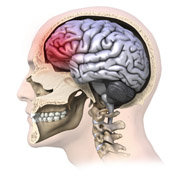Research and Innovation, UNL Office of

Center for Brain, Biology, and Behavior: Faculty Publications
Face-Referenced Measurement of Perioral Stiffness and Speech Kinematics in Parkinson’s Disease
Document Type
Article
Date of this Version
2015
Citation
Journal of Speech, Language, and Hearing Research • Vol. 58 • 201–212 • April 2015
Abstract
Purpose: Perioral biomechanics, labial kinematics, and associated electromyographic signals were sampled and characterized in individuals with Parkinson’s disease (PD) as a function of medication state.
Method: Passive perioral stiffness was sampled using the OroSTIFF system in 10 individuals with PD in a medication ON and a medication OFF state and compared to 10 matched controls. Perioral stiffness, derived as the quotient of resultant force and interoral angle span, was modeled with regression techniques. Labial movement amplitudes and integrated electromyograms from select lip muscles were evaluated during syllable production using a 4-D computerized motion capture system.
Results: Multilevel regression modeling showed greater perioral stiffness in patients with PD, consistent with the clinical correlate of rigidity. In the medication-OFF state, individuals with PD manifested greater integrated electromyogram levels for the orbicularis oris inferior compared to controls, which increased further after consumption of levodopa.
Conclusions: This study illustrates the application of biomechanical, electrophysiological, and kinematic methods to better understand the pathophysiology of speech motor control in PD


Comments
Copyright © 2015 American Speech-Language-Hearing Association
[Link goes to PubMed Central free-access publisher version.]